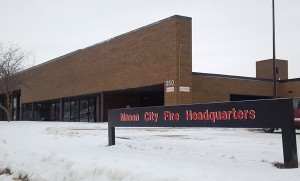
JANUARY 3, 2013 – More than two hundred and sixty five people have been killed in multiple death armed attacks since the Littleton, Colorado Columbine High School shootings in 1999 through the most recent armed attack at the Sandy Hook Elementary School in Newtown, Connecticut.
As members of the fire service we now know that no-notice events such as Aurora, Colorado; Portland, Oregon and Sandy Hook have and will occur anywhere, at any place, to anyone or demographic. There is not one among us who hasn’t been touched by the more recent events in Webster, New York where firefighters became the target of a planned armed attack.
Accordingly, the U.S. Fire Administration (USFA) is undertaking a study of these events in both this country and internationally to identify risk commonalities and best practices to successfully respond to these diverse incidents. The topical report will be released later this month and is currently undergoing extensive peer reviews. Extraordinary efforts on the part of local fire/rescue and EMS agencies have to be taken in order to protect fire and EMS personnel and experience maximum success in saving civilian lives. These events may play out over an extended period of time, requiring large EMS triage, treatment and transportation efforts, under dangerous and unfamiliar conditions to fire and EMS personnel.
In the interim, USFA offers these universal steps to ensure fire and EMS personnel are best prepared to meet this unique and challenging threat.
The most important action we can take is to determine the lead agency for these incidents. In the vast majority of cases, law enforcement will serve in this capacity. Regardless of lead agency declaration, make contact with local or state law enforcement officials and special operations team leadership to become familiar with their strategies and tactical operations. Some possible subjects for discussion and planning follow:
- Potential roles and equipment law enforcement expects from fire and EMS assets (e.g., forcible entry, lights, aerial devices, etc.).
- Review command, control and communications operations.
- Review of NIMS terminology along with any technical law enforcement terminology fire and EMS personnel may have a need to know.
- A discussion of how survivor triage will occur and if law enforcement desires training in same.
- How will injured law enforcement officers be managed? Early on in the incident a protected area should be declared and communicated to EMS leadership.
- Casualty collection points for citizens, EMS triage and how transportation and communications with area hospitals occur.
- What steps should be taken at high risk occupancies to mitigate the loss of life and coordinate with first response personnel.
- Once the plan is developed, it should be exercised and updated annually.









